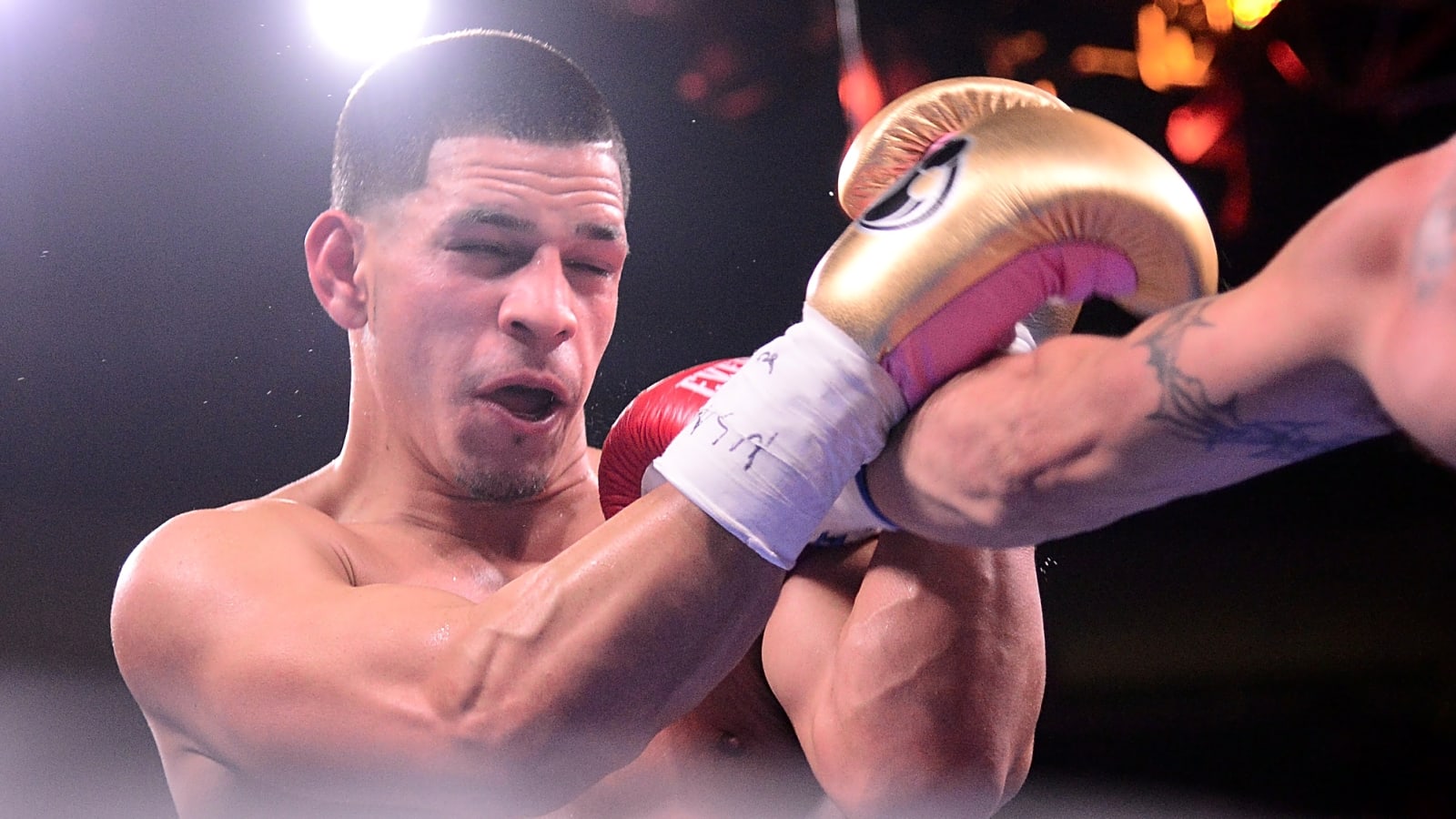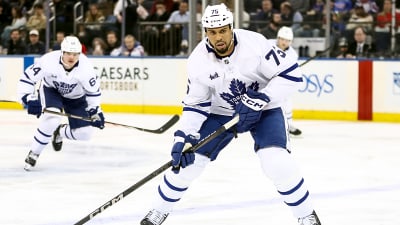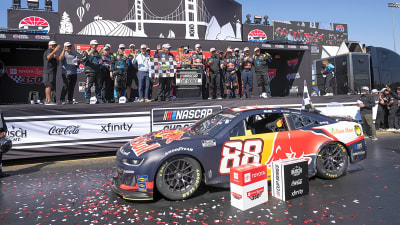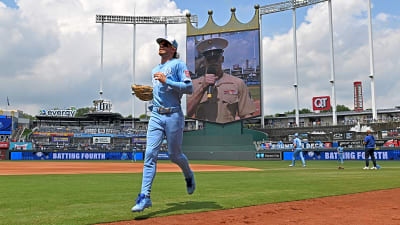
The implosion was preordained, the consequence of hubris masquerading as momentum.
The mythos surrounding Edgar Berlanga (23-2, 18 KOs) unraveled spectacularly on Saturday night in New York, as the self-crowned “King of New York” was floored three times, systematically dismantled, and ultimately halted in the fifth round by the ascendant Hamzah Sheeraz (22-0-1, 18 KOs) in their super middleweight main event at Louis Armstrong Stadium in Queens.
Some observers entered the Berlanga-Sheeraz bout cautiously optimistic, entertaining the possibility—however slim—that Berlanga might rise to the occasion and author a career-defining win. Yet even among his most fervent supporters, there lingered an uneasy sense that Berlanga’s public image as a future superstar was more projection than substance, more branding than boxing. The bout served as a sobering corrective to that illusion.
Boxing has a long tradition of delivering brutal reality checks—unforgiving moments that expose the gap between hype and actual pedigree. Many fighters never recover from them, psychologically or professionally. Berlanga may well be the next name on that list. But the more pressing question is: how did we arrive at such a precarious moment of inflated expectations?
Promoters Enabled Berlanga
Berlanga and his management team (led by Keith Connolly) executed their mandate with precision. They orchestrated a persuasive narrative, enticing major promoters and broadcast networks to buy into an ambitious—if ultimately unsustainable—investment. With calculated bravado, they elevated Berlanga onto marquee platforms and, in doing so, extracted substantial financial returns. At its core, the proposition was transactional: the promoters were under no illusion. They weighed the risk, bet on spectacle over substance, and consented to the terms—fully aware the stock might be volatile.
As any seasoned promoter would do, they marketed the product with theatrical exaggeration, often bordering on the absurd. Bob Arum, the venerable founder and CEO of Top Rank, heralded Berlanga as “the greatest power-punching phenomenon I’ve seen since the heyday of a young Mike Tyson.” It was hyperbole by design—an invocation of boxing’s most fearsome archetype to anoint its newest attraction. Arum, a Hall of Fame architect of spectacle, would go on to champion Berlanga as a prospective adversary for Canelo Álvarez, envisioning a “tremendous fight down the line,” where Berlanga’s raw power might crystallize against elite opposition. It was less a forecast than a sales pitch—a vision contingent not on merit, but on momentum.
But once Top Rank ceased feeding him a carousel of overmatched opponents, that vaunted knockout power—once marketed as mythical—evaporated with the abruptness of sealed Epstein documents. Gone. Vanished. In its place emerged a series of underwhelming performances: four consecutive unanimous decision victories that did little to validate the hype.
The mystique unraveled, and with it, Top Rank’s patience. The promotional juggernaut quietly withdrew its endorsement, concluding that Berlanga was angling for bouts far beyond his current capabilities. Berlanga, unsurprisingly, interpreted the critique not as constructive skepticism but as an institutional attempt to stifle his ascent. The partnership, strained by diverging realities, came to a formal and inevitable end.
Despite the obvious chinks in the armor, multiple promoters jumped on the Berlanga bandwagon, including Eddie Hearn’s Matchroom, Oscar De La Hoya’s Golden Boy Promotions, and Al Haymon’s Premier Boxing Champions. After consideration, Berlanga picked Hearn’s profitable proposal.
The inaugural fight under their multi-fight agreement was a scheduled 12-round contest against Jason Quigley. Berlanga inflicted four knockdowns—including two in the closing round—yet ultimately fell short of securing a knockout. To perpetuate the narrative of Berlanga as a formidable knockout artist, Matchroom strategically matched him against the relatively unheralded Padraig McCrory, whom Berlanga dispatched in a sixth-round knockout. Through this calculated matchmaking, Berlanga’s approval rating experienced a notable resurgence amongst the men with deep pockets.
It culminated in a bout that few impartial observers felt Berlanga had legitimately earned, yet he was nonetheless granted the opportunity to face boxing’s most luminous star, Canelo, last September. Alvarez asserted his dominance early, flooring Berlanga with a precise left hook in the third round. In characteristic fashion, Berlanga responded with a defiant pounding of his gloves against the canvas—a visceral gesture aimed at reigniting his resolve.
That moment set the tone for the remainder of the contest. Alvarez executed a masterful performance—methodical, composed, and commanding—while Berlanga exhibited heart and the ability to sustain punishment. However, the disparity in skill and ring intelligence was undeniable; Berlanga was simply not equipped to compete at the highest echelon, even against an Alvarez who is arguably past his prime.
Despite suffering a lopsided defeat, Berlanga persisted in proclaiming himself the future face of boxing—a testament less to conviction than to the echo chamber surrounding him. It was more or a less a loser’s media tour. When candor is absent and the uncomfortable truths are fizzled out, delusion becomes architecture. The veneer of invincibility—shaped by going the distance against a legendary adversary—can often be sustained by ignorance, especially when those in one’s orbit reinforce the illusion. Their complicity, whether born of loyalty or self-interest, only deepens the deception, even as they profit from the illusion.
So when Berlanga dismantled the vastly overmatched Jonathan Gonzalez-Ortiz on March 15, the reckoning was delayed—if only momentarily. Though he failed to make weight by 1.6 pounds, he was nonetheless permitted to vie for and ultimately claim a secondary title, a decision that underscored boxing’s all-too-frequent indulgence of malpractice.
To Berlanga’s credit, he scored a scored a first-round knockout. But let’s be honest, Gonzalez-Ortiz was morbidly out of shape and had competed just twice in the past decade. It bears noting that he still managed to make the contracted weight despite being the spitting image of Dad Bod Central. The spectacle was, once again, allowed to supersede substance.
The Brutal End
And like Enron in the autumn of 2001, it was time to liquidate.
Berlanga stepped into the ring against Sheeraz, a rangy technician making his super middleweight debut. For the opening stanzas, it appeared to be a competitive affair—measured, tactical, even promising. But as the rounds unfolded, Sheeraz’s piston-like jab and seamless combination punching began to dissect Berlanga’s defense with surgical precision. The illusion of dominance crumbled.
Then came the unraveling.
A coiled left hook from Sheeraz detonated flush, leaving Berlanga temporarily out on his feet. What followed was a merciless salvo that deposited Berlanga onto the canvas. Another knockdown materialized soon after, though referee David Fields intervened with conspicuous charity. A final reprieve. One last “get out of jail free” card was granted to a man whose stock had long been in freefall.
In the fifth round, just 17 seconds in, Sheeraz administered the coup de grâce—clinical, emphatic, inarguable. The farce had finally expired, its oxygen cut off not by critics, but by an opponent unwilling to co-author fiction.
Reality, long deferred, had arrived for Edgar Berlanga.
Boxing Needs To Change But It Won’t
The sport would do itself a considerable service by adopting a more transparent and intellectually honest approach toward its audience. Too often, promoters operate under the assumption that the fanbase is either uninformed or easily misled—an assumption that is not only patronizing but also demonstrably false, for the most part. We do have some fans who are borderline insane. However, a substantial portion of boxing’s viewership is deeply knowledgeable, with a nuanced understanding of the sport’s history, tactics, and talent. For those individuals, Berlanga’s unraveling on Saturday night came as no surprise.
The problem lies not simply in overpromotion but in the increasingly reckless comparisons that shape both public perception and fighters’ own self-belief. Drawing parallels between Zhanibek Alimkhanuly and Gennadiy Golovkin, or more egregiously, between Joe Joyce, Martin Bakole, and George Foreman, does a disservice to all involved. These inflated analogies implant distorted expectations that fighters are rarely equipped to fulfill.
Nevertheless, so long as there is profit to be made, boxing’s promotional machinery will continue churning out these narratives—regardless of their credibility. In the case of Berlanga, after the trash talk and burned bridges along the way, one is left to wonder whether Saturday marked not only a humbling defeat but also the cashing of his final significant fight check.
Fyi for those wondering. This was a one-off fight for Berlanga with RING. With no promoter, he’s in a tight spot. He’ll have to lower his salary expectations for sure. https://t.co/n3O5fXcrmB
— Abraham Gonzalez (@abeG718) July 13, 2025
More must-reads:
- Chiefs sign star offensive lineman to $94 million deal
- Mavericks center Dereck Lively II reportedly undergoes foot surgery
- The 'No. 1 overall MLB Draft picks' quiz
Breaking News
Trending News
Customize Your Newsletter
 +
+
Get the latest news and rumors, customized to your favorite sports and teams. Emailed daily. Always free!








